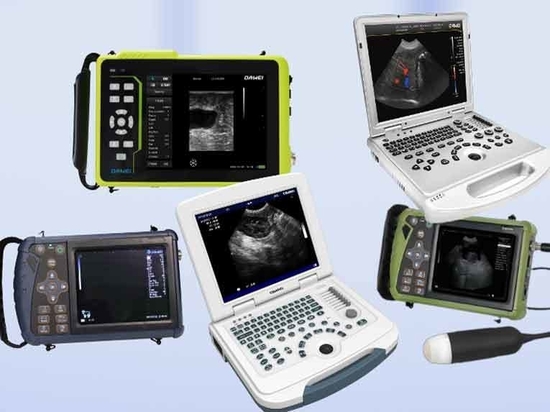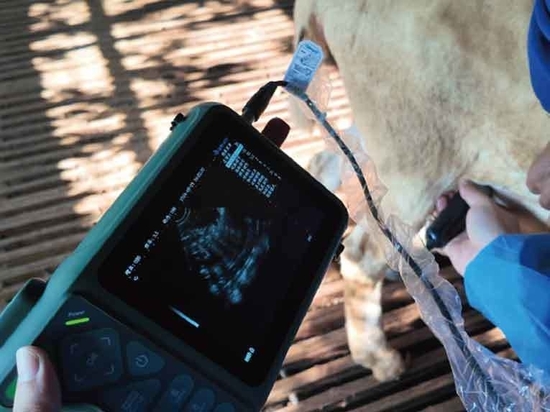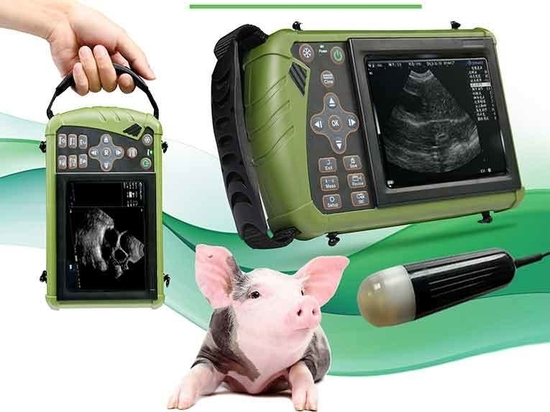
#Livestock
Application of Ultrasound Machine in the Measurement of Backfat Thickness in Cattle
Backfat thickness in cattle refers to the thickness of the adipose tissue in their back region, commonly used to assess the body fat content and breeding status of cattle. Backfat serves as the primary energy reservoir in cattle, and for beef product
Backfat thickness in cattle refers to the thickness of the adipose tissue in their back region, commonly used to assess the body fat content and breeding status of cattle. Backfat serves as the primary energy reservoir in cattle, and for beef production, the appropriate backfat thickness directly impacts meat quality and slaughter yield. Additionally, in beef breeding, using ultrasound backfat meters (veterinary B-mode ultrasound machine) to measure backfat thickness and eye muscle area in cattle enables rapid determination of their biological characteristics, directly influencing the beef breeding process.
The Necessity of Ultrasound Machine for Backfat Thickness Measurement:
Non-invasive: Ultrasound machine measurement is a non-invasive method that directly measures through the skin and fat layer, without causing any impact on the health of the cattle.
Accuracy: Ultrasound machine measurement provides highly accurate results, aiding farmers, veterinarians, and caretakers in promptly understanding the body fat content of cattle. This information allows for adjustments in husbandry practices, ensuring the health and productivity of the cattle.
Real-time: Ultrasound machine measurement is an instantaneous method, with simple and fast operation, facilitating backfat thickness evaluation of multiple cattle within a short period.
High-throughput testing: Due to its user-friendly operation, the ultrasound machine can efficiently test multiple cattle, making it suitable for use in large-scale livestock farms.
Visualization: Through the ultrasound machine, measurement results are displayed in real-time on the screen, enabling operators to intuitively understand the backfat thickness.
Determining the Position for Ultrasound Backfat Thickness Measurement:
The typical location for ultrasound backfat thickness measurement is near the spinal column of the cattle, specifically between the 12th and 13th ribs, approximately 3-5 cm away from the spine. The transducer should perform a transverse scan. Note: Before measurement, it is crucial to clip the hair in the measurement area and ensure it is clean and free from impurities. If the hair is sparse, it can be gently brushed aside.
Specific Steps for Ultrasound Backfat Thickness Measurement:
Secure the cattle during the measurement process (using a cattle chute or neck yoke) to keep the cattle standing calmly, reducing movement and swinging to ensure the accuracy of the imaging.
Apply an appropriate amount of ultrasound gel to the measurement site to ensure effective transmission of ultrasound waves.
Power on the ultrasound machine and adjust the instrument's gain, contrast, and grayscale to appropriate settings.
Gently place the ultrasound transducer on the gel-applied measurement site, ensuring no air bubbles interfere between the transducer and the skin.
The transducer emits ultrasound waves and receives the reflected signals. The ultrasound machine calculates the backfat thickness and displays the results on the screen. Record the results: Document the measured backfat thickness for subsequent analysis and reference.
It is important to note that operators using the ultrasound machine for backfat thickness measurement should have relevant training and experience to ensure measurement accuracy and safety. Furthermore, the normal range and appropriate backfat thickness may vary depending on factors such as cattle breed, age, gender, and intended use. Therefore, evaluation and judgment should be conducted considering the specific circumstances.






